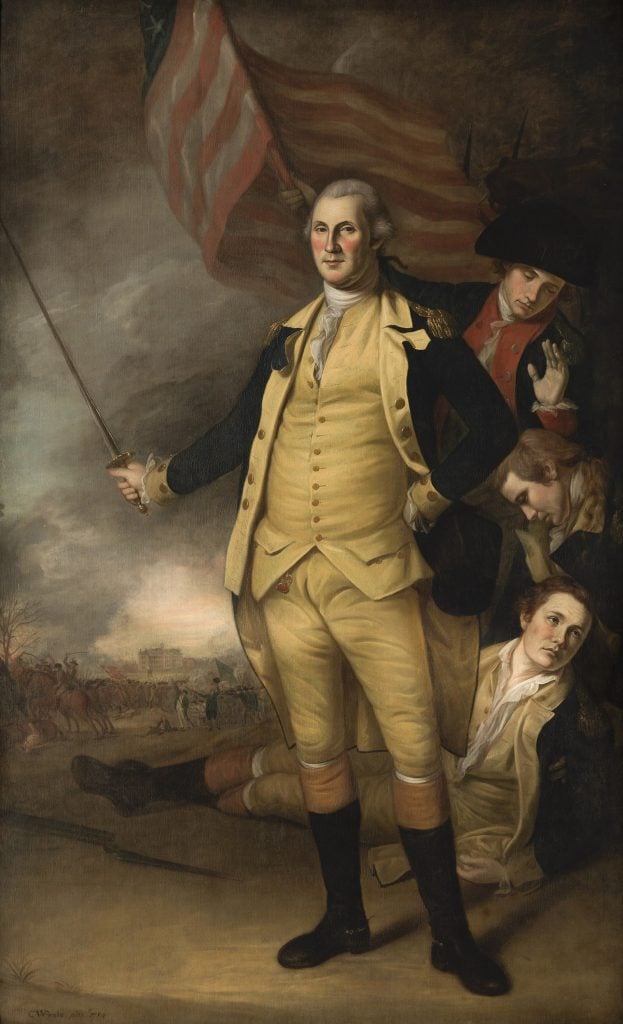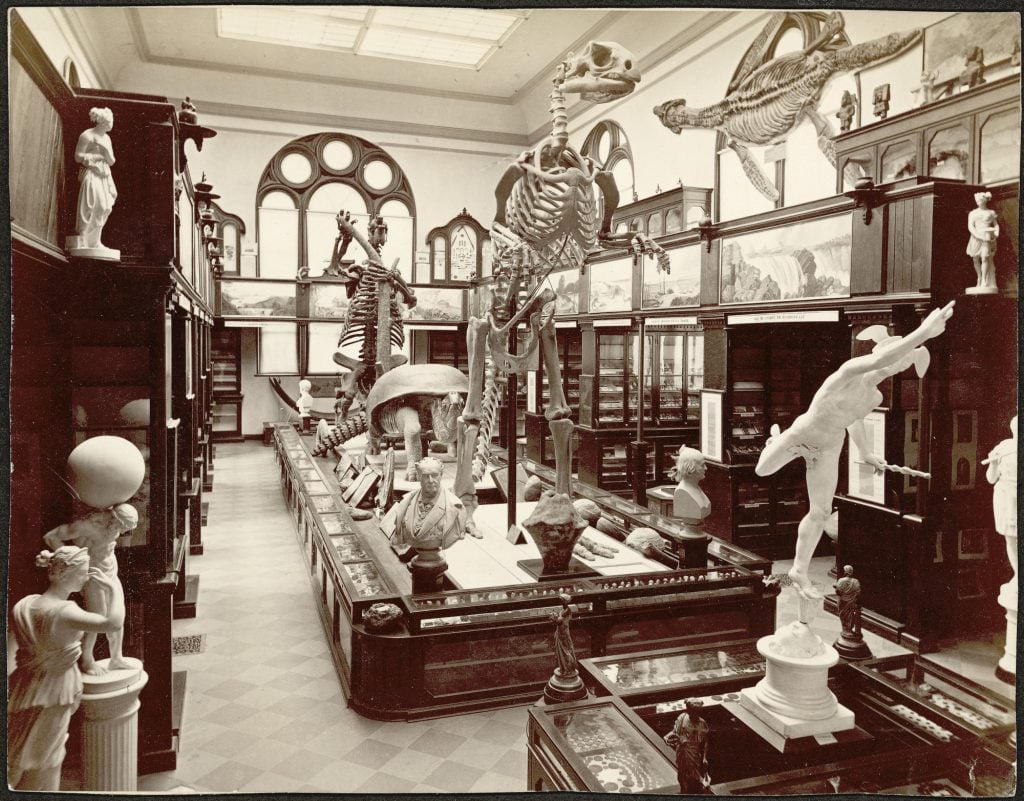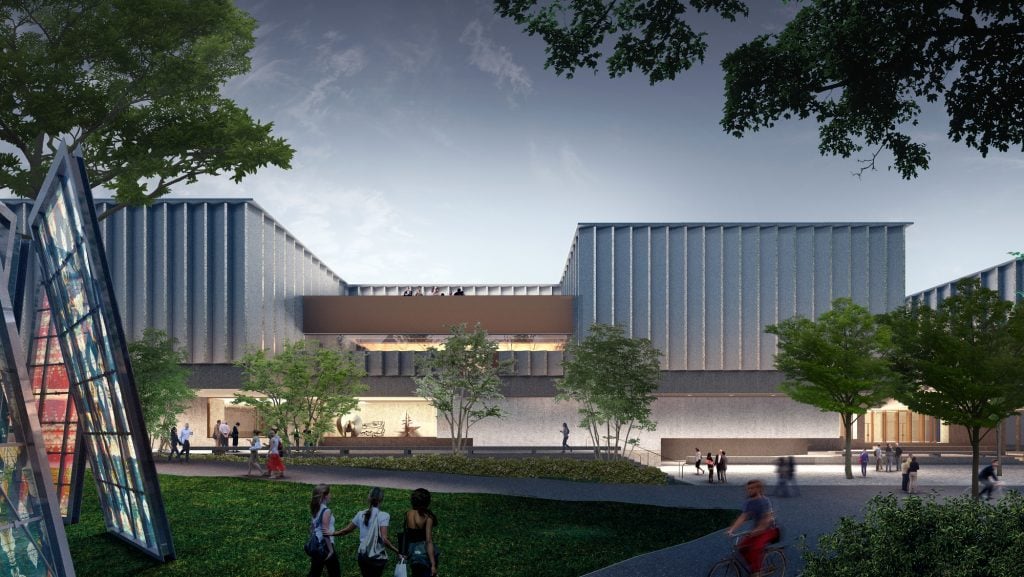Art World
Art Bites: The Revolutionary Battle That Destroyed Princeton’s Art Collection
The university is set to open a new museum in 2025, doubling its current footprint, but its collection has seen serious mishaps in the past.

The university is set to open a new museum in 2025, doubling its current footprint, but its collection has seen serious mishaps in the past.

Adam Schrader

New Jersey’s Princeton University is one of the oldest art-collecting institutions in the United States. One major wrinkle in that history? Not long after the founding of the institution, after it amassed a number of works, its holdings were destroyed during the Revolutionary War.
The Ivy League school was chartered in 1746 as the College of New Jersey, the name it kept until 1896, when it officially became a university and rebranded. It remains the nation’s fourth-oldest university after Harvard, the College of William & Mary, and Yale.
The history of its art collection begins just nine years after the college’s foundation, when it acquired its first piece, a full-length portrait of Jonathan Belcher, the governor of the province of New Jersey, who promoted the establishment of the college and donated the portrait, Princeton University Museum of Art director James Steward said in a 2021 video.
“It was joined by a portrait of King George II, who had issued the letters patent establishing the college,” Steward said. “The two portraits then hung in the central prayer hall in Nassau Hall and were displayed alongside various antiquities and objects of natural history.”

Historic view of the university’s first museum, ca. 1886. Photo courtesy of Princeton University Art Museum
During the American Revolutionary War, British forces occupied Nassau Hall in late December 1776. The British used the prominent building as a barracks due to its large capacity and its strategic location.
The Battle of Princeton, fought on January 3, 1777, was pivotal for the struggling Continental Army. After an attack at Trenton in late December 1776 led to a surprise victory for George Washington, he and his troops crossed into Pennsylvania to regroup. A week later, Washington led a night march to attack the British garrison in Princeton and won again, boosting morale. The British would surrender to American and French forces in 1781.
“The Battle of Princeton was a turning point in the war for American independence and for the collecting history of Princeton. While it was a major victory for George Washington and the American troops, significant works from the College’s nascent art collection—already a kind of cabinet of curiosities—were destroyed in that battle,” Steward said in an emailed statement.
Steward added that cannons were reported to have ignited a fire in what is now the Faculty Room in Nassau Hall, causing significant damage and resulting in the loss of the two portraits and other valuable items were stored—effectively the school’s nascent art museum. The portrait of King George II was reportedly destroyed by a cannonball fired by American forces during the battle, which the British took as a sign of defeat.
“The college started over again after, in more ways than one I’m afraid, after the ravages of revolution, including commissioning a life portrait of George Washington from the most revered American portraitist of the time, Charles Willson Peale,” Steward said in his 2021 video.
The college began to collect again in 1783 and that painting of Washington at the Battle of Princeton, created in 1784, was among the first pieces acquired. Peale was also a faculty member and was working to create another museum in Philadelphia at the time.
“Unfortunately, cataclysm awaited again when, in March 1802, a fire broke out on the third floor of Nassau Hall that destroyed almost everything,” Steward said. Only a few works of art survived, including the Peale portrait, along with about 100 of the library’s books.
The university began its collection anew once again and, learning from the previous fire, faculty and students were able to save the most valuable examples, including the Peale portrait, when fire struck the building housing the collection yet again in March 1855.

Rendering of the new Princeton University Art Museum, 2020 by Adjaye Associates. © Adjaye Associates.
Now, the university’s art museum has a staff of around 120 and an annual budget of $29 million to conserve the 115,000 works in its collection. The museum recently announced that it would add four large-scale commissions and an additional two acquisitions to its collection as construction continues on a new building expected to open in 2025.
The new commissions include works by the artists Diana Al-Hadid, Nick Cave, Jane Irish, and Tuan Andrew Nguyen. The new acquisitions include works by Jun Kaneko and Rose B. Simpson.
Around 275 workers per day are constructing the building, which is expected to be completed in August. In total, the museum will boast around 146,000 square feet, doubling the footprint of the previous structure.
“Of course, the museum’s collections have long since recovered. But the commitment to understanding the world through original objects that began in 1755 endures today,” Steward said in his email. “We can’t wait for visitors to experience the collections when we open our new building next year.”
What’s the deal with Leonardo’s harpsichord-viola? Why were Impressionists obsessed with the color purple? Art Bites brings you a surprising fact, lesser-known anecdote, or curious event from art history.